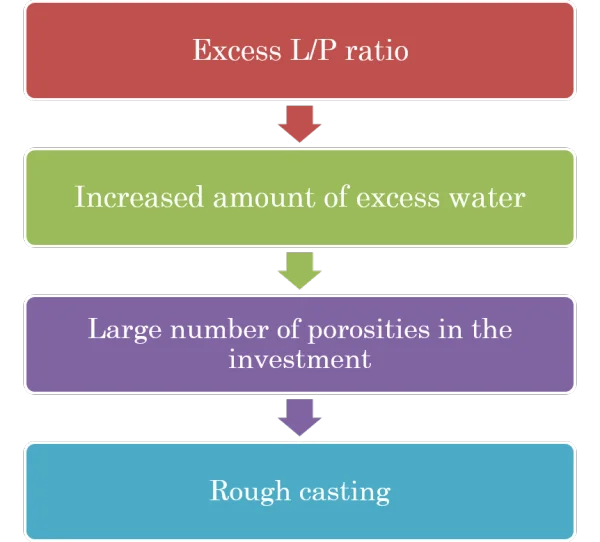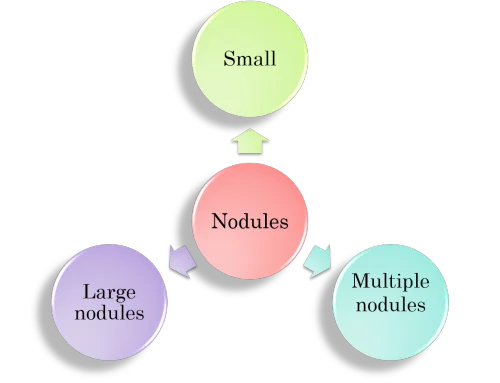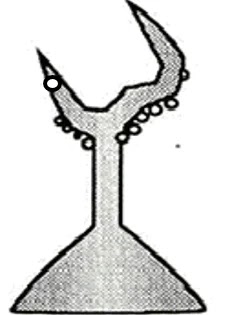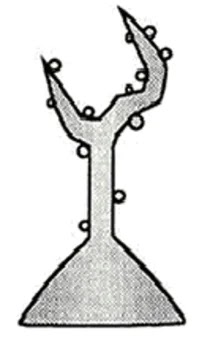Introduction
- An unsuccessful casting leads to considerable trouble and time. In most instances, defects in castings are often avoided by strict observance of procedures governed by certain fundamental rules and principles.
- A casting defect is an irregularity in the metal casting process that is very undesirable. Errors in the casting procedure often leads to casting defects which results in unfitting of casting and may have poor esthetic and mechanical properties.
Classification of Casting Defects
The
casting should be replica of the pattern created in size, texture and
form. Because of its causes and effects often overlaps, it is very
difficult to classify casting defects.
First Classification of Casting Defects as follows-
i) Metal Excess (Nodules, Fins, Larger Casting)
ii) Metal Deficiency (Smaller casting, Incomplete casting and porosity)
iii) Distortion of casting
iv) Chemical contamination of casting
Second Classification of Casting Defects as follows-
i) Casting Size Mismatch
ii) Distortion
iii) Surface Roughness
iv) Nodules
v) Fins
vi) Porosities
vii) Incomplete Casting
viii) Contaminated Casting
Third Classification of Casting Defects as follows-
Casting Size Mismatch
There
are always chances of casting size mismatch due to improper technique
and failure in management of investment materials. Also shrinkage and
expansion of wax pattern and investment materials often leads to casting
size mismatch. Thus resulted casting may be-
i) Too Small
ii) Too Large
Distortion
- Wax distortion is the most common problem in casting defects that can occur during the forming and removal of the pattern from the mouth or die.
- Distortion can occurs during manipulation due to release of stresses.
- Some distortion can occur due to hardening of investment material or Expansion and Shrinkage of material.
How to Avoid Distortion in Dental Casting
- Don’t overheat wax.
- Place in increments.
- Never cool the pattern suddenly.
- Avoid occluding air during manipulation.
- Carve with sharp instruments.
- Permit it to attain equilibrium.
- Invest immediately.
- Place it in the center of the casting ring.
2. Surface Roughness
- These are relatively finely spaced surface imperfections lead to surface roughness.
Causes of Surface Roughness
- Prolonged heating of the mold results in disintegration of gypsum bonded investment.
- As a result, the walls of the mold are roughened
Remedy
- In thermal expansion technique, the mold should be heated to casting temperature and the casting should be made immediately.
c) Type of Investment
Phosphate bonded investment tend to have greater surface roughness than gypsum bonded investment.
d) Composition of Investment
More coarse silica particles produce coarse castings.
e) Too High and Too Low Casting Pressure
Minimized by using 15lbs/sq inch of air pressure.
3. Surface Irregularities
- These are isolated imperfections which are not characteristic of the entire surface area.
a) Nodules
b) Water Films
c) Fins
a) Nodules
i) Small Nodules
Remedy
The best method to eliminate the incorporation of air within the casting investment is
- By mixing under vacuum.
- By using wetting agents.
- Castings with phosphate bonded investments are more susceptible to such imperfections.
- They can be removed with round bur.
ii) Large Nodules
- Produced by air trapped during investing procedure
iii) Multiple Nodules
b) Water Films
- We all know that Wax is repellent to water so when the investment separated from the wax pattern in any case, a water film may form irregularly over the surface.
- These irregularities seen as minute ridges or veins.
- This Condition Occurs-
- Use of Surfactant helps in prevention of water film irregularities.
c) Fins
- Fins occur when cracks are produced within the investment that radiate out from the surface of the pattern .
- During Casting, these cracks are filled with molten metal forming thin fins on the casting.
Significance :
Finning increases the finishing time of the casting and if the defects occur in critical areas (e.g. near the crown shoulder).
Causes of Fins
i) Pattern Positioning
- Positioning of several patterns too close and pattern placed in the same plane in the mold results in formation of fins.
- Reason: The expansion of the wax is far greater than that of the investment, causing breakdown or cracking of the investment if the spacing between patterns is lesser than 3mm.
Patterns placed too near the investment edge causes fins.
- Reason: If too little investment covers the wax patterns, the alloy is more likely to break through the mold.
- Too much investment over the wax ups may locate the wax patterns too close to the heat center of the mold and impair the escape of gases
Remedy
- Proper positioning of the wax pattern.
- The casting ring should permit the patterns to be 3- 6 mm apart.
- 6mm from the top of the investment.
- Minimum 9mm of investment between pattern and the ring liner.
ii) Rapid Heating Rate
- A characteristic surface roughness occurs due to flaking of the investment when the water/ steam pours into the mold.
Remedy
- During the heating of the investment filled ring from room temperature to 700º C, Ideally 60 minutes should be elapsed.
- The greater the amount of the investment, the more slow it should be heated.
iii) Premature Heating
- If setting isn't complete at the time a ring is placed in the oven, the mold may be weak and unable to withstand steam pressure during burnout.
- Investment could fracture as a consequence.
Remedy
- Burnout procedure for recommended setting time.
iv) Liquid Powder Ratio
- The higher the liquid/powder ratio, the investment becomes weak and develop cracks results in roughness.
- If low Liquid/Powder ratio is used, the investment becomes thick and cannot be properly applied to the pattern. Because of this air can not be sufficiently removed leading to back pressure porosity.
Remedy
- Correct proportion of powder to liquid.
v) Casting Pressure
- Too high pressure during casting causes fins.
Remedy
- Enough force required for liquid alloy to flow onto the heated mold.
- Adjust the casting machine for each alloy.
- 0.10 to 0.14 MPa gauge pressure is sufficient.













No comments:
Post a Comment